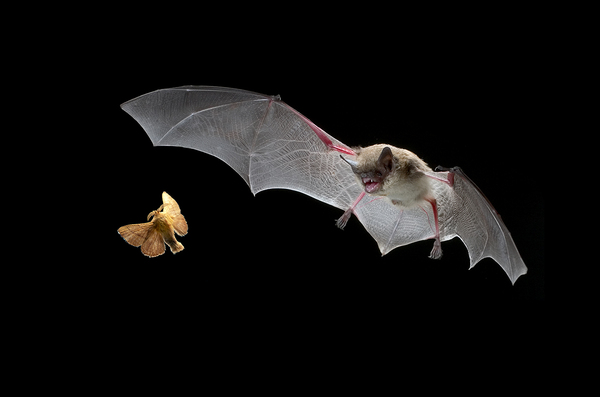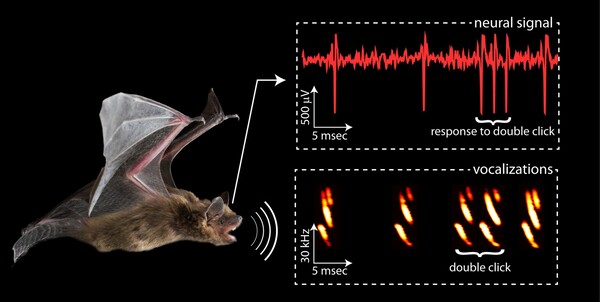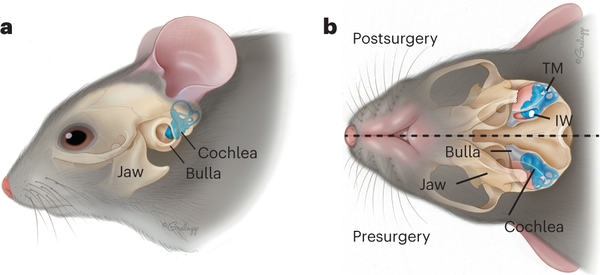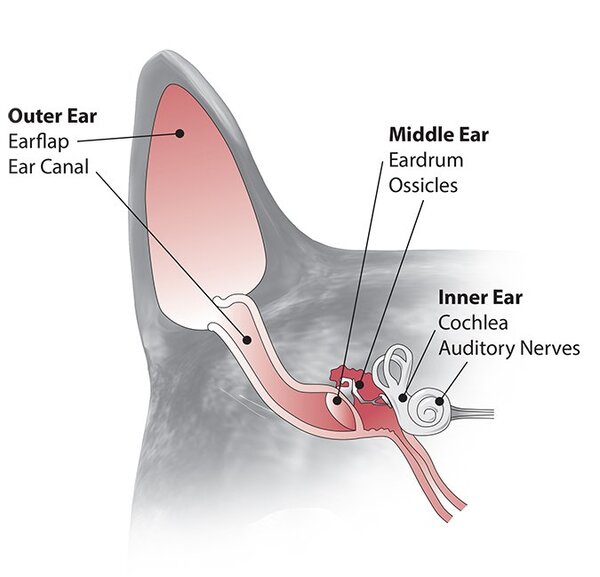Human ears can sense vibration waves with frequencies between 20 Hz and 20,000 Hz, but cannot sense other frequencies. Compared with humans, animals use a wider range of sound frequencies, which actually exceeds the range that humans can perceive. Humans can only hear less than 10% of the sounds made by animals. As for which animals have the most developed hearing, recent studies have sorted out the ten animals with the most developed hearing, including moths, bats, dolphins, beluga whales, mice, wolves, cats, etc. Let's take a look together.

No. 1, Moth (up to 300,000 Hz)

Many people don't know that moths are actually animals with excellent hearing. Moths have such powerful hearing mainly due to the role of co-evolution. This is because bats, the main natural enemy of moths, have one of the most sensitive hearing among vertebrates. There are about 160,000 species of moths in the world, most of which can hear sounds between 1000 Hz and 240,000 Hz. This allows many moths to escape predation by bats, and one species called the greater wax moth can even sense ultra-high frequency sound waves up to 300,000 Hz. Researchers at the University of Strathclyde pointed out that this type of creature may be the most sensitive animal in the world.

No. 2, Bats (1000-200,000 Hz)

Bats are widely regarded as animals with excellent hearing and are the only species among mammals that can actually fly. They are masters in the use of sound, with powerful hearing and the ability to continuously emit ultrasonic waves while flying. After interacting with the surrounding environment, these ultrasonic waves are received and analyzed by the bat's hearing system, helping to distinguish prey from obstacles, thereby achieving hunting or evasive actions. Bats have a wide range of hearing and can perceive various sounds from 1000 Hz to 200 kHz. Although they are less sensitive to sounds below 10,000 Hz, common bats are relatively sensitive to sounds from 15,000 Hz to 90,000 Hz.
No. 3, dolphins.html">Dolphins (750,000 to 150,000 Hz)

dolphins.html">Dolphins occupy an important position in the top ten animal hearing rankings because hearing is one of their most sensitive senses. Dolphins rely on hearing when hunting, cruising, and entertaining. They can use echolocation to "listen" to where they are about to arrive. When dolphins make high-decibel sounds, the sound waves are reflected by surrounding objects, and dolphins analyze these echoes to understand the surrounding environment. Using this skill, dolphins can locate and identify nearby prey and detect organisms buried in the mud and sand on the seabed. Porpoises are known for their particularly good hearing among dolphins, with a hearing range of 75 Hz to 150,000 Hz.
No. 4, Beluga(1000~123,000 Hz)

Beluga whales are nicknamed "sea canaries" for their unique sounds, and the unique bulge on the top of their heads is called "melon-headed whales." Although beluga whales have no vocal cords, they have an amazing talent for language, can imitate the sounds of other animals, and make 11 completely different sounds. Although beluga whales' sense of smell is not very developed, this does not affect their highly developed hearing. In fact, they are one of the representatives of the animal kingdom with excellent hearing. The hearing range of ordinary humans is between 20 Hz and 20,000 Hz, but the hearing frequency range of beluga whales reaches 1,000 Hz to 123,000 Hz, with a very high upper limit, making it one of the most sensitive mammals. Therefore, beluga whales can hear ultrasonic waves that humans cannot detect in the ocean.
No. 5, mice(200-91,000 Hz)

Among those animals with outstanding hearing, mice can be said to be one of the representatives that give humans headaches. Not only can they hear ultrasonic frequencies far beyond the range of human perception, but they can also generate ultrasonic waves themselves and communicate with each other using these sounds that we cannot hear. Especially in the quiet environment at night, any tiny sound is enough to alert them. No matter how slight the sound, mice will immediately stop all activities and carefully distinguish the source and cause of the sound. Usually, if a mouse is injured, other mice around will immediately hide.

No. 6, Wolf (10-80,000 Hz)

Wolves are also members with strong hearing. When hunting, their hearing and sense of smell play a vital role. Studies have shown that wolves can hear sounds between about 10 Hz and 80 kHz, which means that wolves can hear lower and higher frequency sounds than humans. In nature, the sound frequencies produced by many animals are within the hearing range of wolves, which allows wolves to concentrate on listening to important sounds in noisy environments, such as the calls of prey or potential danger signals. In open areas, they can hear sounds 16 kilometers away, and in forest areas, this distance can reach 10 kilometers.
No. 7, Cat(450,000-65,000 Hz)

Among common pets, cats have excellent hearing. They can hear higher-frequency sounds than most humans or other animals such as dogs, and are particularly sensitive to high-frequency sounds. Therefore, when someone makes a shrill cry, cats will react more strongly to it. Domestic cats sometimes suddenly raise their heads, stare with wide eyes, and remain motionless without an obvious target. This does not necessarily mean that they are looking at something, but are likely to be listening to sounds in a certain direction that are beyond the human hearing range. In addition, as an evolution to adapt to their excellent hearing, the muscles around cats' ears are very developed, which allows their ears to rotate up to 180 degrees, thereby expanding the range of sound waves collected and further enhancing their hearing coverage.

No. 8, Opossum(500-64,000 Hz)

Opossums are known for their excellent ability to play dead. Although they look similar to mice, they have a pointed snout, hairless ears and a long hairless tail. This long tail is not only used for balance, but also as a tool similar to a "hand" to help them hold tree trunks or reach some small objects. Due to their fluffy hair, clean coat color and innocent eyes, possums look more attractive than mice.
Opossums are known for their unique tricks, that is, they suddenly stop in the middle of a run, confusing the pursuers, and then suddenly jump up and run away. This behavior makes them called "brake hands". Opossums have many natural enemies, including wolves, dogs and other beasts, so their hearing is not significantly different from these natural enemies, and they remain at a sharp level to help them alert to the dangers around them.
No. 9, Rabbit(50-60,000 Hz)

When it comes to animals with sensitive ears, many people, including me, think of rabbits. Rabbits usually have long and large ears, some erect and some drooping, which often become part of their breed characteristics. In addition to being an organ of hearing, rabbit ears can also help regulate body temperature. When the ears are erected, they can help dissipate body heat, and when they are attached to the sides of the body, they help keep warm. The hearing frequency range of rabbits is about 50 to 60,000 Hz, and the most sensitive range is between 1,000 and 16,000 Hz. Within this range, domestic rabbits can distinguish sounds of about 3 decibels.

Rabbits are timid animals that panic at sudden noises, strangers, and other unknown animals, such as cats and dogs. This sensitivity is also an adaptive response for them to survive in the wild.
No. 10, Dogs(150,000 Hz-50,000 Hz)

As representatives of excellent hearing in the animal kingdom, dogs rank at the top of the animal hearing rankings. Their hearing ability is closely related to breed and age. Similar to humans, the hearing range of some dog breeds decreases with age, especially German shepherds and miniature poodles.

Dogs have a hearing range of approximately 3,000 Hz to 12,000 Hz, and they can hear sounds 5 to 15 decibels weaker than humans. Dogs' sensitive hearing for high-pitched sounds allows them to quickly detect the high-pitched screams of small animals, but it also causes them to be more sensitive and uncomfortable with high-pitched sounds from vacuum cleaners, lawn mowers, hair dryers, and power tools than humans. Because dogs hear higher-pitched sounds than humans, their auditory perception of the world is different from that of humans. Sounds that seem loud to humans often have high-frequency tones, which may scare dogs away.
In listing the most developed animal hearing rankings, the main consideration is the hearing range of animals, and a comprehensive reference to relevant Internet rankings and lists is made to give the above list. Please note that this list is for entertainment reference only, and comments are welcome at the end of the article!
animal tags:
We created this article in conjunction with AI technology, then made sure it was fact-checked and edited by a Animals Top editor.